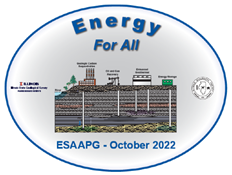Short Courses & Workshops
 Optional short courses and workshops are being offered as part of the ESAAPG Meeting.
Optional short courses and workshops are being offered as part of the ESAAPG Meeting.
Short Courses
Monday, October 24th, 12:30-4:00 p.m.
Registration required: $50 Professional, $25 Student
Choose between:
Cracking the Frac: Successful Completion Optimization Parameters
Michael Payne, SPE – Shawnee Oil Company, LLC
This course will cover mechanics of hydraulic fracture modeling, fluid chemistry, Inflow Performance, and practical applications for fracture treatment design and execution. Focus on formation damage from completion operations and processes. The course is designed benefit anyone involved or becoming involved with fracturing operations, or those who desire to broaden their knowledge level in the design and execution of hydraulic fracturing treatments.
Residual Oil Zones in the Illinois Basin
Nathan Webb and Nate Grigsby – Illinois State Geological Survey
This short course will cover the background on Residual Oil Zones (ROZs); what they are, how they form, and their utility as CO2 enhanced oil recovery targets. It will then focus on ROZ formation in the context of the geologic history of the Illinois Basin and demonstrate techniques for prospecting. Finally, the course will examine recent research that has taken place to screen for ROZs in several Illinois Basin formations and provide a deep dive into the ROZs in the Cypress Sandstone.
Workshops
Wednesday, October 26th, 12:30-4:00 p.m.
Complimentary with ESAAPG Meeting registration
Choose between:
Subsurface Hydrogen Storage
Topics will include subsurface reservoir performance in non-salt stratigraphy, the Hydrogen Economy and why subsurface storage is required, engineering for short-cycle hydrogen withdrawal, and critical parameters to address caprock efficacy and leakage.
Critical Minerals and Associated Resources in the Illinois Basin
This workshop will explore recent efforts from both the CORE-CM and EarthMRI programs to evaluate critical mineral resources, demonstrate separation technologies of these resources, and employ associated resources such as carbon to manufacture high-value products.
